Long Bien Bridge
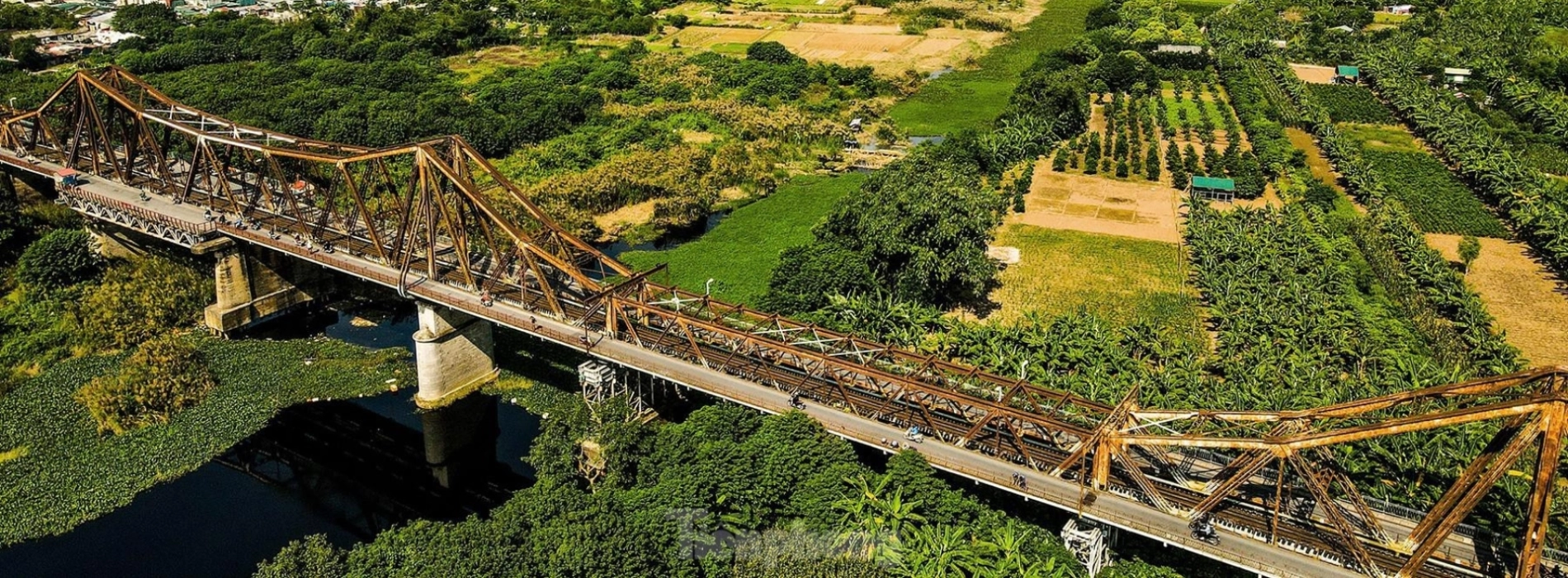
Across the Red River stands an old, worn-out bridge, covered in rust and decay. You might wonder, why hasn’t it been taken down? That’s because it’s the Long Bien Bridge, a living witness to Hanoi’s history throughout the 20th century and beyond. Let’s join Asia King Travel to discover more about this iconic landmark.

An old bridge, weathered by time
Long Bien Bridge was constructed in 1898 and completed in 1902. It was also known as the Paul Doumer Bridge, named after the Governor-General of Indochina at the time. While the French regarded it as a symbol of bringing civilization to the colonies, many Vietnamese workers tragically lost their lives during its construction.
The bridge served as the main connection between Hanoi and Hai Phong in the 20th century, facilitating both road and rail transportation of goods. Ironically, although the French claimed to have brought this “civilized” bridge to Vietnam, it was the very same bridge they crossed to withdraw from the country after the Geneva Agreement in 1954.

The plaque recording the construction company and the year the Long Bien Bridge was built
During the Vietnam War, the Long Bien Bridge suffered severe destruction from American bombings. Vietnamese forces set up anti-aircraft defenses right on the bridge and nearby riverbanks, determined to protect this vital transportation route. The bridge was repeatedly damaged or destroyed, and as a result, most sections of the current Long Bien Bridge were rebuilt by Vietnam in the 1970s rather than being part of the original structure.
After the war, traffic grew increasingly heavy, and the bridge could no longer handle the volume. Hanoi built the more modern Chuong Duong Bridge to take over. Long Bien Bridge, like an elder stepping aside for the younger generation, quietly stands back, watching the sky, clouds, and river flow.
Suggested for you: Ha Noi Trip 1-day: Discovery of Hanoi by motorbike
Long Bien Bridge connects central Hanoi with Hong Ha Ward (formerly part of Long Bien District). Although several other bridges now span the Red River, Long Bien Bridge still sees significant traffic.
The bridge is located very close to Hanoi Old Quarter, making it easy to visit during a Hanoi tour. You know Phung Hung Train Street, right? This railway street will lead you straight to Long Bien Bridge. You can stroll or rent a motorbike to the bridge and enjoy a leisurely sightseeing journey.
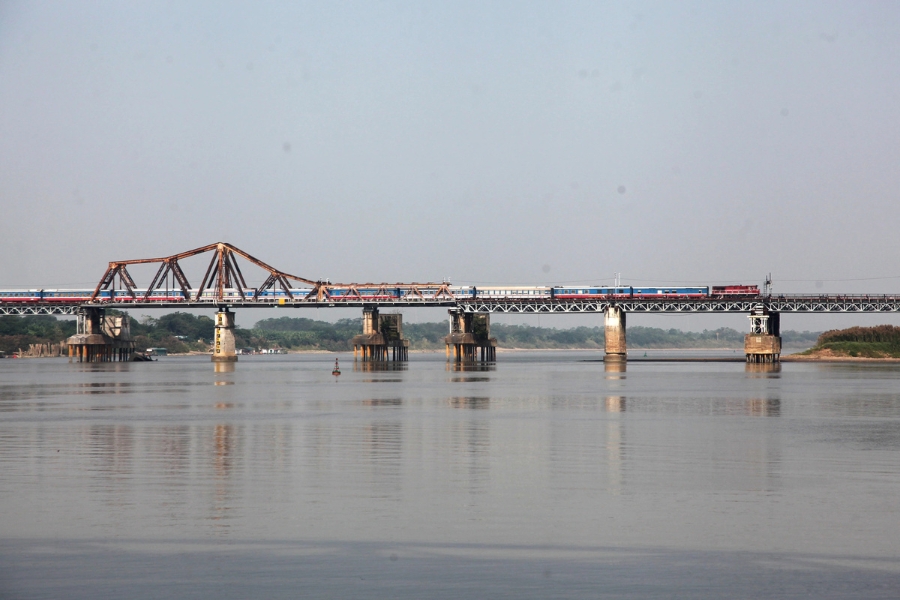
Long Bien Bridge connects the railway line from Hanoi Station to areas outside the capital
The best time to visit Long Bien Bridge is when traffic is light, usually at dawn or from mid-morning to mid-afternoon. Coming during rush hour can both disrupt traffic and take away the peaceful vibe you’re looking for. Visiting in autumn or winter is ideal, as the weather perfectly complements the natural scenery.
The bridge is 2.2 km long, with two vehicle lanes and a railway track in the middle. The bridge inherited the advanced engineering techniques of European construction at the time. Moreover, in terms of architectural artistry, its unevenly rising spans resemble the graceful curves of a dragon, both powerful and elegant. The entire structure is made of high-quality steel, proven by its remarkable endurance of more than 120 years.
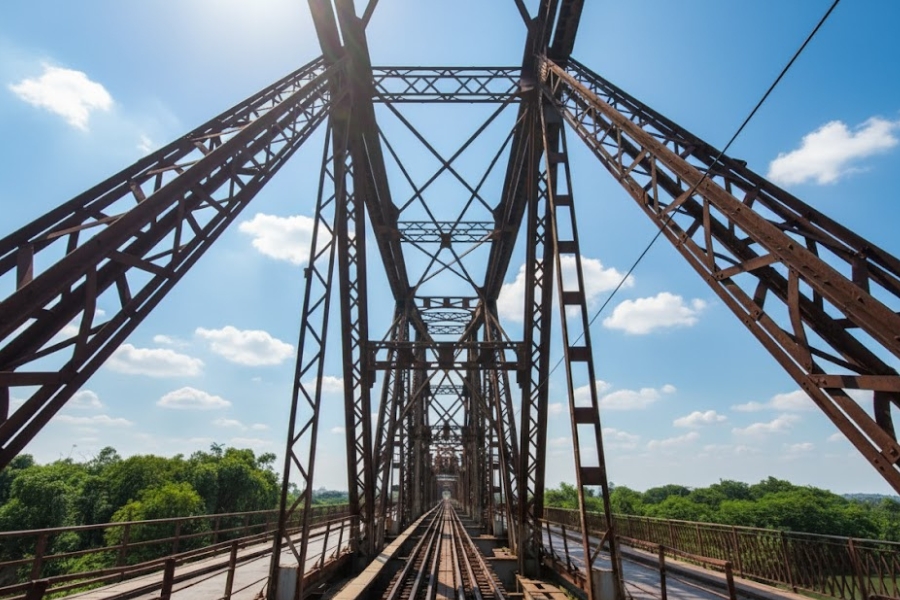
The structure and the three lanes on the bridge
From Long Bien Bridge, you’ll see a calmer, more peaceful side of Hanoi compared to the bustling city center. Nearby flows the gentle yet mighty Red River, and in the distance stretch flower gardens and vegetable fields along its banks. It’s a different Hanoi. One that feels spacious, serene, and deeply connected with nature.

The area around Long Bien bridge is filled with refreshing greenery
With its open, breezy atmosphere, Long Bien Bridge has become a favorite spot for many to hang out or enjoy the evening air. A leisurely walk along the bridge, watching the flow of people and traffic below, can help ease away feelings of confinement or the worries that weigh you down.
The bridge always carries a quiet, nostalgic, and timeless charm, making it a perfect backdrop for artistic photos. You can freely express your creativity and capture stunning moments on this historic bridge.
When taking photos, be mindful of the traffic on the bridge to ensure safety. The best times for photography are early in the morning or during the breezy late afternoon. A newly discovered photo spot with a stunning backdrop is the Ngoc Thuy embankment on the Long Bien side. The lush green meadow stretching along the embankment looks just like a scene straight out of an anime.
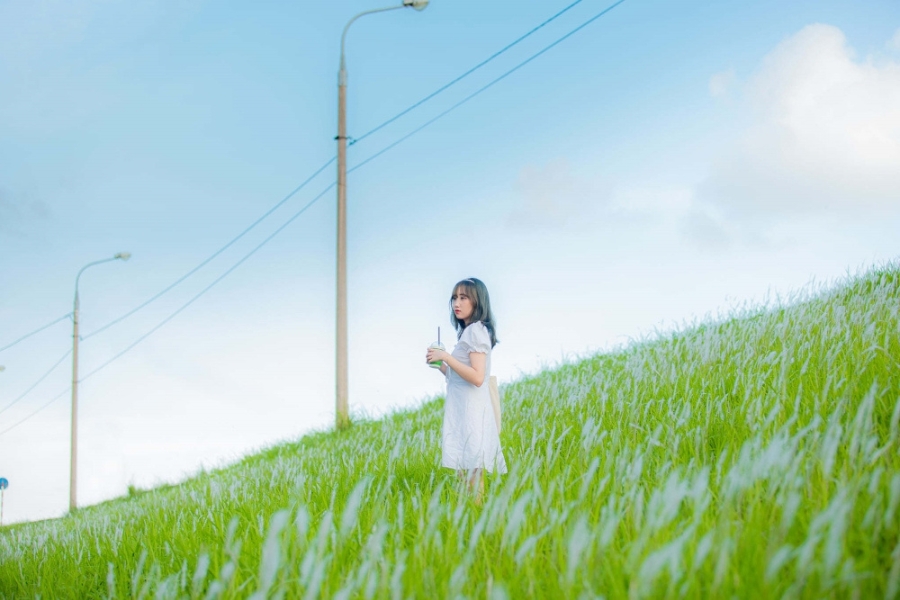
That scene. It's real
Right at the foot of Long Bien Bridge is the Red River Bank, a familiar spot for many Hanoi locals. From the bridge, you’ll find a staircase leading down to the bank. The area is a long, flat, lush green meadow with fresh air and a picturesque landscape where the river and trees blend harmoniously.
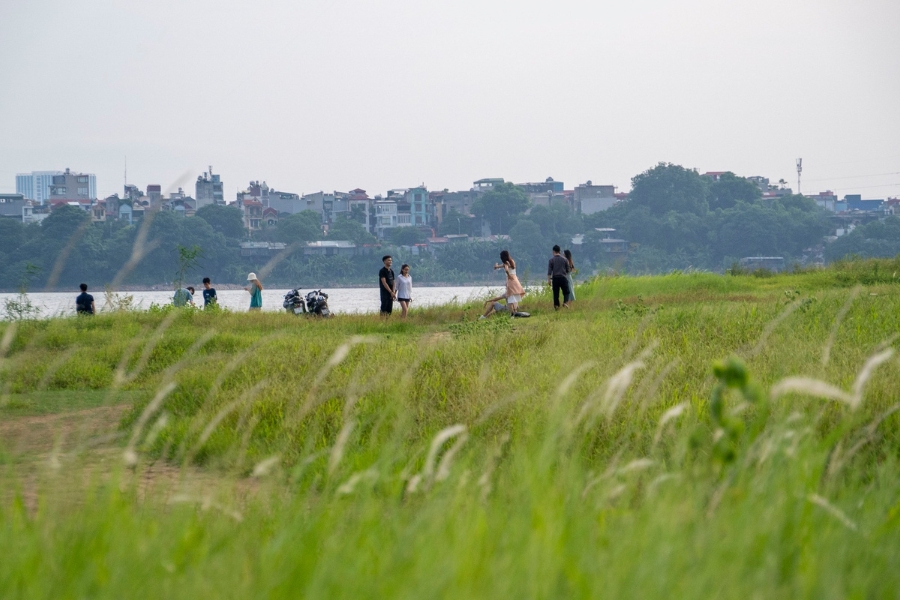
A spacious area for relaxation
You can come here with friends for a picnic or a camping party. The area has a campsite equipped with all the essentials you might need. There’s also an outdoor playground nearby.
Long Bien Bridge is an interesting attraction you shouldn’t miss when visiting Hanoi Old Quarter. Get in touch with Asia King Travel to explore a piece of the history of this beautiful city.
Suggested for you: Ha Noi Tours